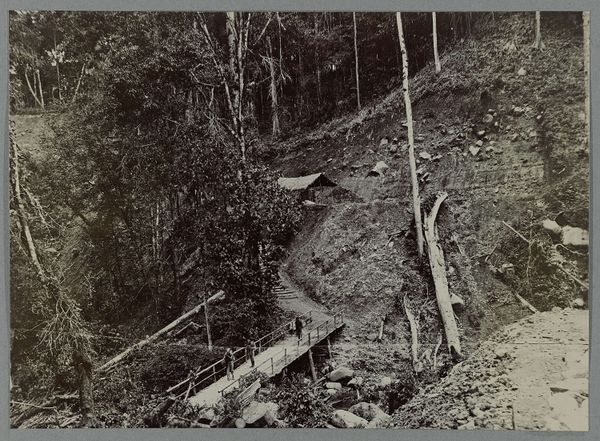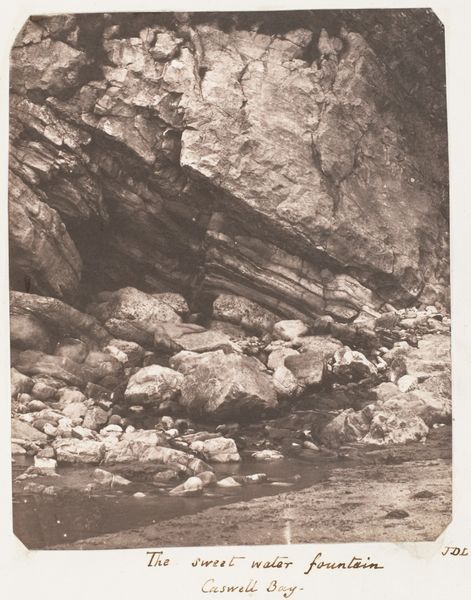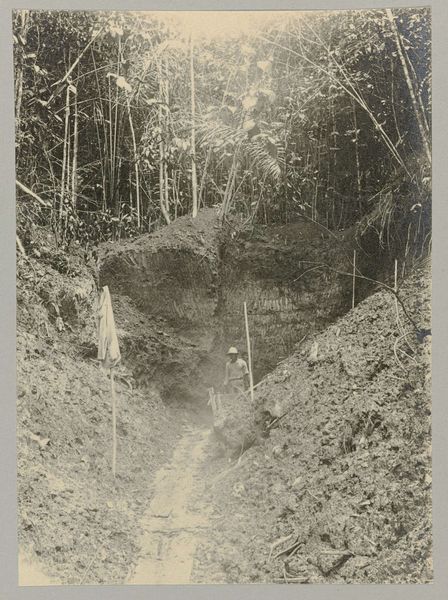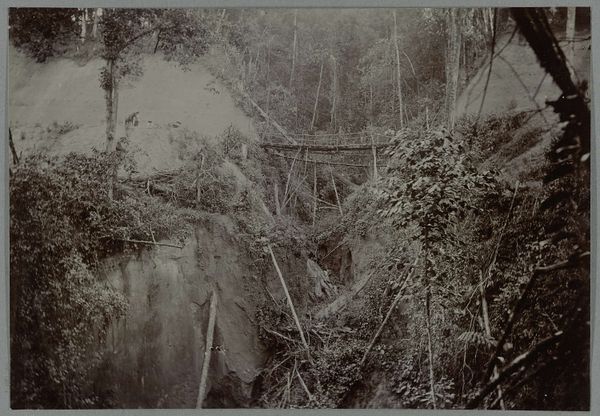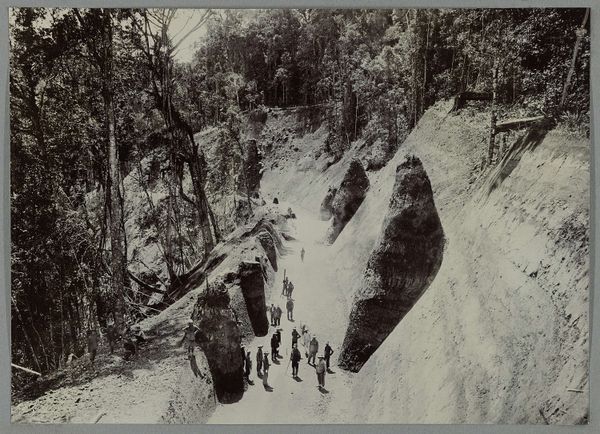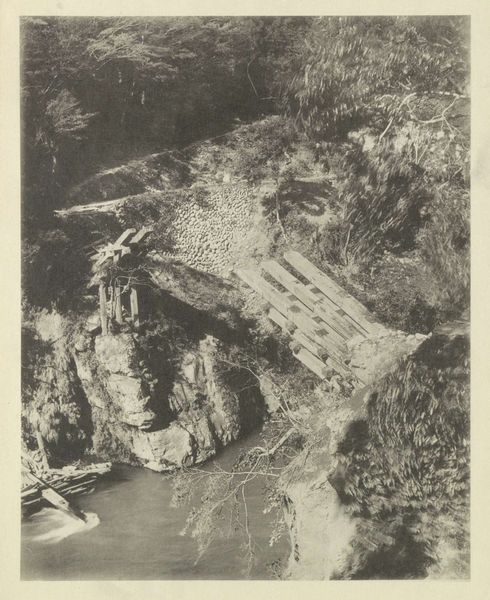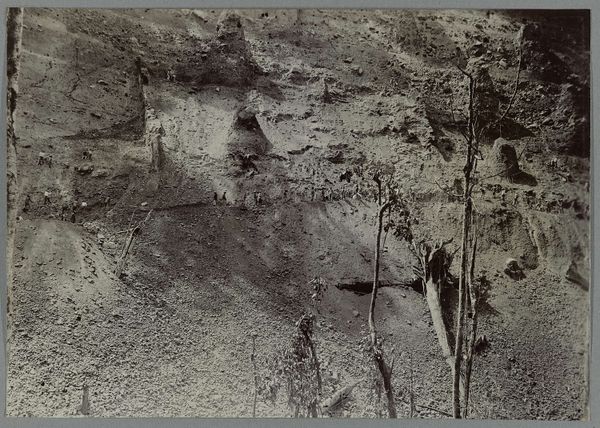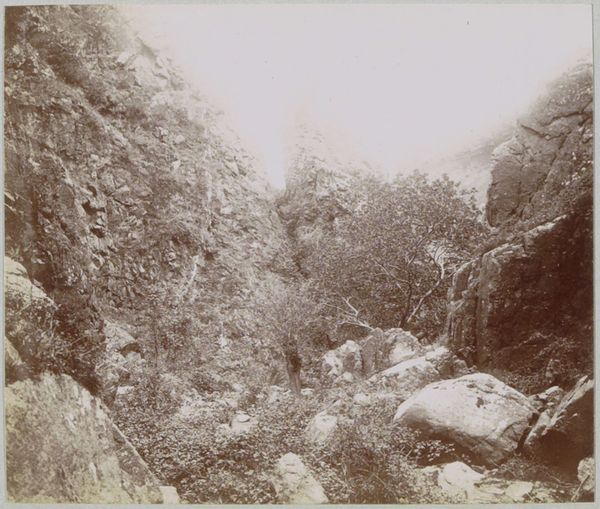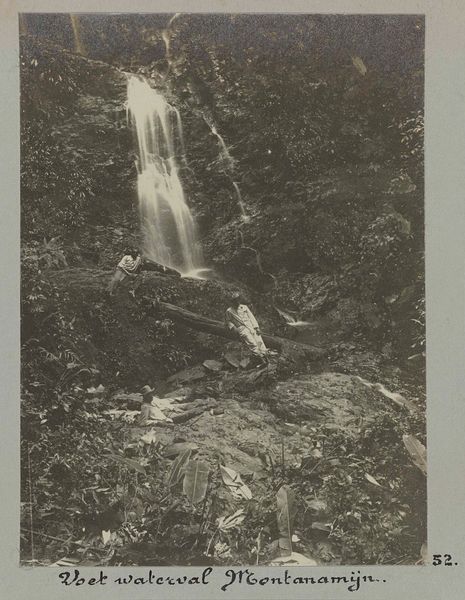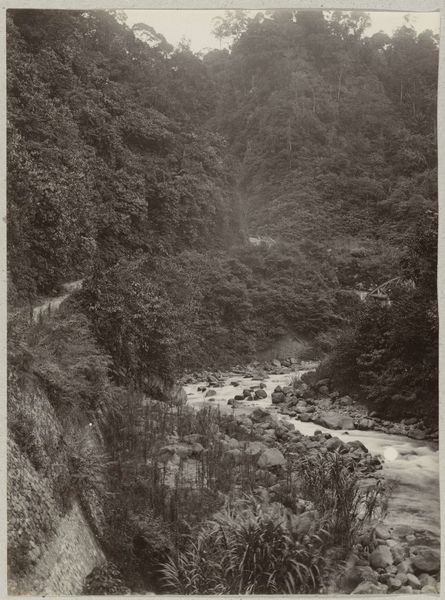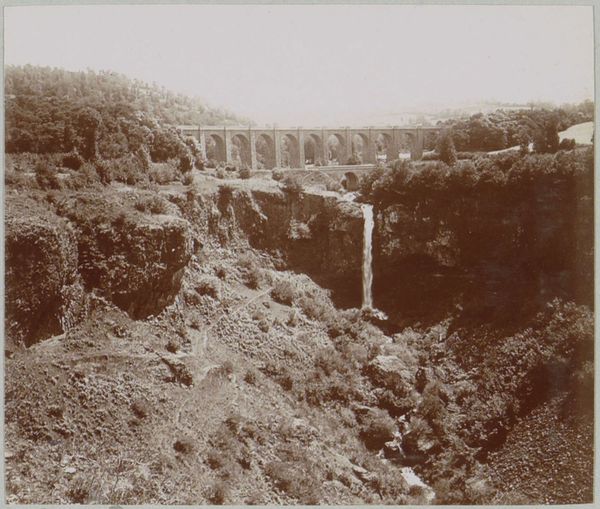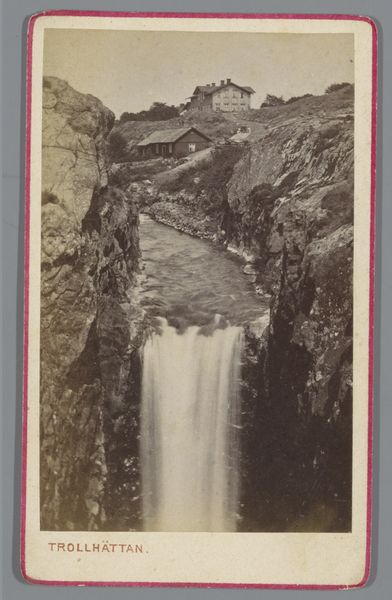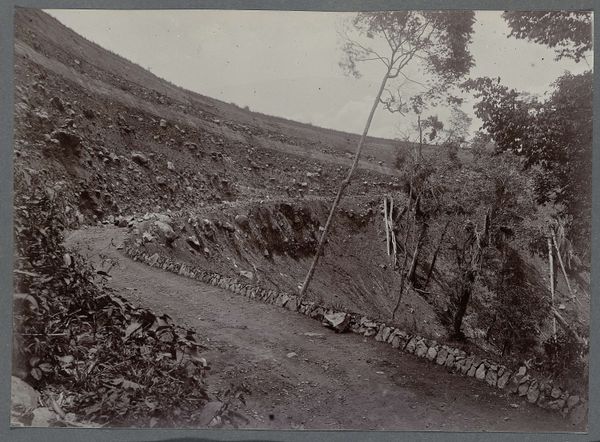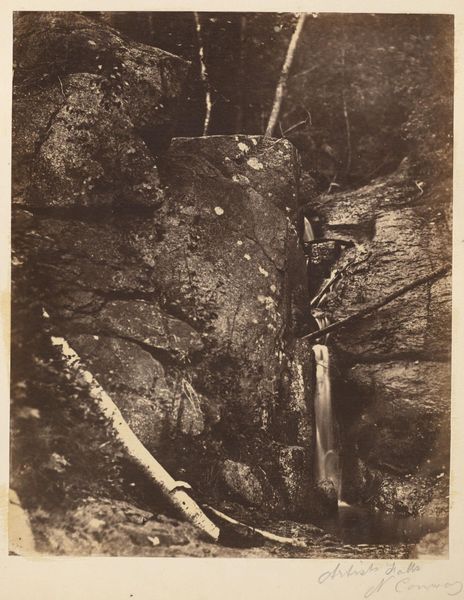
Copyright: Public domain
Editor: Here we have Giuseppe Barberis' etching, "Cascata Di Gursci Presso Strambinello," created in 1890. The intricate lines depicting this landscape create a scene that’s both grand and a little intimidating. How do you interpret the message this etching is trying to convey? Curator: It’s interesting that you find it intimidating. As a historian, I see this work very much embedded in the burgeoning tourism industry of the late 19th century. Prints like this served as accessible versions of exotic landscapes. They visually codified Italy’s beauty for an expanding middle class. Does that alter your impression? Editor: That makes a lot of sense! So, instead of seeing raw, untamed nature, viewers were getting a carefully constructed ideal. Do you think that Barberis was deliberately trying to sanitize the natural world? Curator: Perhaps not sanitise, but definitely curate it for public consumption. Note the viewpoint - a safe distance from the cascade itself. Consider how these picturesque depictions also fed into a narrative of national pride and identity. Are there similar landscapes that are displayed and treated the same way today? Editor: Definitely! National parks and travel advertisements do the same thing. They offer this accessible, romantic version of nature. I didn’t see that at first, I was too focused on the dramatic rendering. Curator: Precisely! And that's the power of understanding the historical context. It shifts our perspective from individual expression to broader cultural and political forces. It’s interesting how that shift in perception shapes your overall appreciation. Editor: Absolutely! I'll never look at a landscape print the same way again. Thank you for illuminating the cultural and societal narratives embedded within Barberis’s etching.
Comments
No comments
Be the first to comment and join the conversation on the ultimate creative platform.
